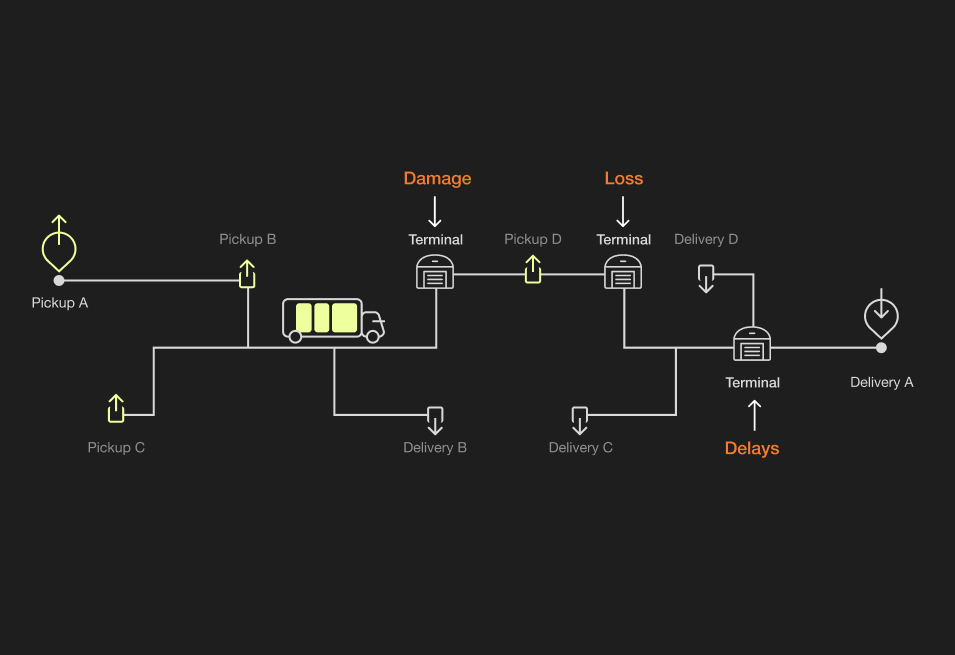Freight Class Shipping Codes

The freight industry is one that contains a myriad of moving pieces, intermediaries, and regulations. From carriers, freight brokers, freight forwarders, third-party logistics companies, and a host of other integral platforms that work to sustain the shipping industry, there is no shortage of entities contributing to the machine. This surplus creates a vast array of methods of operating, which advertently fosters a demand for standardization. Yet, despite the motivation to standardize the industry in the middle of the 20th century—where carriers, brokers, advancers, and every type of intermediary tried to monopolize shipping—no such standard formed. Today, standardization in the freight industry is somewhat nonexistent. Shippers and brokers carry out their business how they see fit, adhering to government regulation but little else. Furthermore, while the way in which companies operate differs dependent on the person(s), there is some form of standardization within the industry. The most prominent being freight class codes, which are basically a form of categorization that dictates how expensive it is to ship a specific material or good.
What are freight class codes?
To understand freight class codes we must first understand freight class. The National Motor Freight Traffic Association (NMFTA) laid out guidelines that standardized the way in which cargo ‘types’ are classified. Today, everyone adheres to the NMFTA’s classifications and uses them as guidelines when shipping. Essentially, think of them as the starting point that will help both the carrier and shipper create a loose estimate (even if inaccurate) for a certain commodity or good. They’re the point A that is later built upon. Thus, you can deduce that shipping, say, paper would be less costly than a flammable chemical. Each of these materials will then be assigned a classification which serves as their anchor.
How many?
THE NMFTA has a total of 18 different classifications. Each specific classification covers a large gamut of products or goods and uses a freight calculation equation as a backbone. We’ll explain exactly how that equation works for freight class codes later. Lastly, the only time where there may be extra or unique freight class codes outside of the standard 18, is when shipping with certain LTL carriers, as this helps them differentiate between different types of cargo. Again, each freight class is then used as a reference for freight brokers, advancers, carriers, 3pls, and any other intermediary in the industry for pricing purposes. For instance, class 500 is the costliest type of good or product to ship and class 50 is the most inexpensive. With this knowledge alone, one could loosely measure what the pricing looks like between 50 and 500.
How are freight class codes chosen?
Now that you know what exactly freight class codes are and why they’re important, you may find yourself wondering how they’re chosen. Who is responsible for assigning freight class codes and what parameters must they follow? The National Motor Freight Traffic Association calculates their freight class codes based on four different variables; physicality (there’s more to just weight, we’ll explain later), liability, storage, and handling. By assessing each of these factors, a product or good will then be issued a specific freight class code.
The physical
When addressing the physical nature of a certain type of cargo, what we’re really looking at is the density, value, and dimensions of the freight. If you look at each freight class code from 50 to 500, you’ll notice that each contains a density requirement. The density is always in cubic feet and the weight in pounds. However, for those of you that don’t understand how density is calculated, see below:
Calculating density for freight class codes
Fire and foremost, the equation for density goes as follows: density = weight/volume. Thus, D=W/V.
Volume
Your volume is then measured by multiplying your length, width, and height, then dividing the total by 1728. 1728 is how many cubic inches exist in a cubic foot, which then renders the volume-specific to cubic feet (which is the standard in the shipping industry).
Weight
Lastly, your weight is simply the number of pounds that your cargo weighs. You can measure this by placing your shipment on a scale. Once you’ve identified this value, then you’ll divide it by your volume and the solution will be your density.
Storing
It should be no surprise to you that some items are going to be more difficult than others. Pallets of wood that easily stack upon each other will be easy to load into a truck than deer antlers of varying sizes. When it comes to storage, a host of questions need to be answered regarding the freight. Is it dangerous to store? Are there hazardous materials onboard? Is it combustible or flammable? What if the freights are open-topped? Does it require temperature control? Can it spoil? All of these questions factor into how easily stored a certain product or good is. Once this is assessed, it will contribute to the freight class code assigned.
Handling
The other factor to consider outside of storing, regarding the truck itself, is how difficult it is to handle the cargo. Think of certain types of products or goods that require niche training and machinery to move, or certain hazardous materials that need a specific type of transport not commonly used in freighting. Generally speaking, is it fragile? How heavy is it? Will it need extra packaging once it has been shipped? By evaluating the degree of difficulty required in actually handling the cargo, this factor is also integrated into the freight class code. It’s extremely important to identify the handleability of your cargo as this greatly influences the price of shipping.
Liability
How likely is it that a certain type of freight is damaged, stolen, or somehow ruined along the way? Think of produce—we all know food spoils, right? The perishable nature of a certain cargo will certainly influence its freight class code. Assessing liability is basically calculating risk for the entire shipment. While there may be a type of cargo that is a pain to store, difficult to handle and has a poor density rating, the risk of things going wrong can be low. Inversely, there exists cargo that is a breeze to store, can be handled easily, and has a great density value, yet there’s massive risk in the cargo spoiling over the transit. Liability is arguably the most important factor outside of a cargo’s physicality, as it signals to the carrier just what sort of worries accompany the shipment. Some carriers won’t ship certain types of cargo because of the risk involved. Thus, liability stands to be a major factor in the assignment of freight class codes.
Freight class codes calculated
It is the four different factors above that make up the parameters in which freight class codes are assigned. By evaluating and assessing the physical characteristics, ease of handling, storability, and liability of a given product or good, the NMFTA then assigns a type of cargo their freight class code. In which case, what exactly is a freight class code? Is there a freight class code chart that breaks it down for us? The answer to this is yes and it can be purchased on the National Motor Freight Traffic Association’s website. If you want a quick breakdown, go ahead and review the below. While the codes themselves cover infinitely more, this summary can at least assist with perspective.
Understanding freight class codes
As you can deduce from the above, a shipper must be meticulous about their measurements to ensure they’re claiming the correct freight class code for every different item. Without the proper diligence, the incorrect freight class code can be assigned, and the error will create hiccups in the future. These hiccups, unsurprisingly, can be quite costly. On the other hand, by having a freight class code that’s more expensive than the accurate one, a shipper may spend a ton of extra money on shipping than necessary. Later, once the mistake has been caught and the correct code assigned, rectifying the situation can be difficult—especially being that both shipper and carrier sign off on a bill of lading. All in all, freight classification codes can be thought of as price points that not only provide a reference for shippers and carriers alike, but they help both parties understand the parameters of the shipment, the work involved, and what sort of liability they’re facing.





